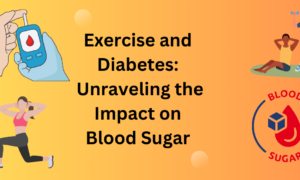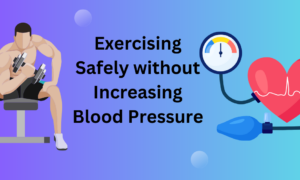Are you tired of trying every new fad diet or “miracle” weight-loss solution, only to end up back where you started? If you’re looking for a sustainable way to lose weight and keep it off for the long term, you’ve come to the right place.
Successful Weight Loss: 10 Tips for Long-Term Results is your comprehensive guide to achieving your weight loss goals and maintaining a healthy lifestyle. Say goodbye to crash diets and hello to sustainable, evidence-based strategies that will help you shed those excess pounds and keep them off for good.
In this blog, we’ll explore proven lifestyle changes that promote sustainable weight loss and overall well-being. From creating a healthful meal plan and exercising regularly to tracking your progress and making small, healthy changes, we’ll cover it all. You’ll learn how to make your weight loss journey a successful and enjoyable one, setting yourself up for a lifetime of health and happiness.
Are you ready to embark on your weight loss journey and achieve lasting results? Let’s dive in and discover the secrets to successful weight loss together.
Introduction to Sustainable Weight Loss
Sustainable weight loss is more than just shedding a few pounds quickly. It encompasses long-term changes to your lifestyle that promote lasting results and overall well-being. Unlike crash diets or quick fixes, sustainable weight loss focuses on gradual and realistic changes that are easier to maintain in the long run.
When you embark on a sustainable weight loss journey, you prioritize creating healthy habits that will benefit you for years to come. This approach not only helps you shed excess weight but also improves your overall health and reduces the risk of chronic conditions such as diabetes, heart disease, and obesity-related complications.
By adopting sustainable weight loss strategies, you’re not only aiming for a temporary transformation, but you’re investing in a lifelong commitment to your health. Instead of relying on strict diets or extreme exercise routines that are hard to sustain, sustainable weight loss emphasizes making small, manageable changes to your lifestyle.
These changes can include incorporating regular physical activity, creating a balanced and nutritious meal plan, managing portion sizes, and embracing a positive mindset. The goal is to create healthy habits that become part of your daily routine and support your weight loss journey in the long term.
Remember, sustainable weight loss is not about achieving rapid results but rather making gradual progress that is maintainable and sustainable. By focusing on sustainable practices, you can achieve your weight loss goals while improving your overall health and well-being.
Next, let’s explore the pitfalls of traditional dieting methods and why sustainable lifestyle changes are a better approach to achieving long-term weight loss success.
Understanding the Pitfalls of Traditional Dieting
When it comes to weight loss, many people are tempted by crash diets and quick fixes that promise rapid results. However, these approaches often fail to deliver sustainable and long-term weight loss. Understanding the pitfalls of traditional dieting is crucial in order to make informed choices and prioritize long-term lifestyle changes for successful weight management.
The Dangers of Crash Diets
Crash diets, which involve drastically restricting calories or eliminating entire food groups, may lead to initial weight loss. However, they are not sustainable or healthy in the long run. Such diets often lack essential nutrients, which can result in nutrient deficiencies and compromise overall health. Additionally, crash diets can slow down metabolism, making it harder to maintain weight loss and increasing the likelihood of regaining the lost weight once normal eating patterns resume.
The False Promise of Quick Fixes
Quick fixes, such as weight loss pills or extreme cleanses, may seem appealing due to their promises of effortless weight loss. However, these approaches rarely address the underlying factors contributing to weight gain and do not foster healthy habits or long-term behavior change. They may also come with potential side effects and risks to overall well-being.
The Need for Long-Term Lifestyle Changes
Unlike crash diets and quick fixes, sustainable weight loss requires a shift in lifestyle habits and behaviors. It involves making small, achievable changes that can be maintained over time. By focusing on long-term lifestyle changes, individuals can cultivate healthier habits and set themselves up for successful, sustainable weight loss.
Rather than seeking instant results, it is important to adopt a comprehensive approach that includes healthy eating, regular physical activity, and behavior modification. This allows for gradual and steady weight loss, which is more likely to be maintained in the long run.
Remember, weight loss is not about reaching an arbitrary number on the scale but rather improving overall health and well-being. By prioritizing sustainable lifestyle changes, you can achieve long-term weight loss and enjoy the benefits of a healthier and happier life.
Make Small, Achievable Changes to Your Lifestyle
When it comes to achieving long-term weight loss success, it’s crucial to focus on making small and achievable changes to your lifestyle. Crash diets and extreme measures may offer quick results, but they are rarely sustainable in the long run. By taking a gradual approach and implementing realistic adjustments, you can cultivate healthier habits that will support your weight loss journey for the long term.
Assess Your Current Lifestyle
Start by assessing your current eating and exercise habits. Take some time to reflect on what areas need improvement and identify the factors that contribute to weight gain. Keep a food diary to track your eating patterns and be mindful of your portion sizes. Understanding your current habits will help you identify specific areas where you can make positive changes.
Set Realistic Goals
Set small, achievable goals that align with your overall weight loss objectives. For example, aim to incorporate more fruits and vegetables into your meals, or commit to taking a 30-minute walk every day. By setting realistic goals, you can gradually work towards a healthier lifestyle without feeling overwhelmed.
Make Subtle Dietary Changes
Instead of overhauling your entire diet, focus on making subtle dietary changes that have a big impact. Swap out sugary drinks for water or herbal tea, opt for whole grains instead of processed carbohydrates, and choose lean protein sources like poultry, fish, and legumes. These simple swaps can help create a calorie deficit without leaving you feeling deprived.
Incorporate Regular Physical Activity
Integrate regular physical activity into your daily routine. Find an exercise or activity that you enjoy and can sustain in the long term. Whether it’s brisk walking, dancing, swimming, or weightlifting, the key is to find something that keeps you engaged and motivated. Aim for at least 150 minutes of moderate-intensity aerobic exercise per week, along with strength training exercises twice a week.
Seek Support and Accountability
Enlist the support of family, friends, or a weight loss group to help you stay motivated and accountable. Having a support system can provide encouragement, guidance, and accountability throughout your weight loss journey. Consider joining online communities, participating in weight loss challenges, or working with a professional weight loss coach or nutritionist.
Remember, successful weight loss is a journey that requires patience, persistence, and sustainable lifestyle changes. By making small, achievable modifications to your daily routine, you can set yourself up for long-term success and improved overall well-being.
Understanding Your Eating and Exercise Habits
To embark on a successful weight loss journey, it is essential to understand and assess your current eating and exercise habits. This self-reflection allows you to identify areas for improvement and make necessary changes to support sustainable weight loss. Here are some key steps to help you gain insight into your habits:
1. Keep a Food Diary
Keeping a detailed record of what you eat and drink throughout the day can illuminate patterns and behaviors that may hinder weight loss. Note the types of foods, portion sizes, and any emotional triggers or situations surrounding your eating habits. This diary will serve as a valuable tool for identifying areas where you can make healthier choices and reduce unnecessary calorie intake.
2. Evaluate Your Meal Frequency and Portion Sizes
Take a closer look at how often you eat and the portion sizes you consume. Are you mindlessly snacking throughout the day or eating larger portions than needed? Consider incorporating regular, balanced meals and avoiding excessive snacking to maintain a calorie deficit conducive to weight loss.
3. Assess Your Nutritional Choices
Examine the quality of the foods you typically consume. Are they predominantly nutrient-dense, whole foods, or do they consist of processed and high-calorie options? Aim to include more fruits, vegetables, lean proteins, and whole grains in your diet. These choices provide essential nutrients while keeping calorie intake in check.
4. Reflect on Your Relationship with Exercise
Evaluate your current exercise routine, if any. Are you engaging in activities that you enjoy and that align with your fitness goals? Consider your exercise frequency, intensity, and duration. Strive for a balance of cardiovascular exercise, strength training, and flexibility exercises to support overall fitness and weight loss.
5. Identify Barriers and Solutions
Take note of any obstacles that may arise when it comes to consistent healthy eating and regular exercise. It could be a lack of time, motivation, or knowledge. Brainstorm practical solutions to overcome these barriers, such as meal prepping, scheduling regular workout sessions, or seeking guidance from a fitness professional.
By understanding and assessing your eating and exercise habits, you can take proactive steps toward adopting healthier behaviors. Make small, sustainable changes that align with your goals, and gradually progress towards a more balanced and active lifestyle. Remember, consistency and perseverance are key on your weight loss journey.
Creating a Healthy Meal Plan

When it comes to sustainable weight loss, a key element is creating a healthy meal plan that not only supports your weight loss goals but also nourishes your body with essential nutrients. Here are some tips to help you create a balanced and nutritious meal plan:
1. Set Achievable Goals
Start by setting achievable goals for your weight loss journey. Instead of focusing on drastic calorie restrictions, aim for gradual and sustainable weight loss. This will ensure that you’re giving your body the nourishment it needs without feeling deprived.
2. Prioritize Whole Foods
Include plenty of whole foods in your meal plan, such as fresh fruits, vegetables, whole grains, lean proteins, and healthy fats. Whole foods are rich in nutrients and fiber, which will keep you satisfied and help regulate your appetite.
3. Control Portion Sizes
Pay attention to portion sizes to avoid overeating. Use smaller plates and bowls to visually trick your mind into feeling satisfied with smaller portions. Additionally, practice mindful eating by eating slowly and savoring each bite. This will help you recognize when you’re actually full.
4. Plan Your Meals in Advance
Take the time to plan your meals in advance to avoid making impulsive food choices. This will ensure that you have healthy options readily available and prevent you from reaching for convenient but unhealthy choices. Consider batch cooking and meal prepping to save time during the week.
5. Include a Variety of Nutrients
Ensure that your meal plan includes a variety of nutrients to support your overall health. Aim for a balance of carbohydrates, proteins, and fats in each meal. Incorporate a rainbow of fruits and vegetables to ensure you’re getting a wide range of vitamins and minerals.
6. Stay Hydrated
Don’t forget to stay hydrated throughout the day. Water helps regulate your appetite, aids digestion, and supports overall well-being. Aim to drink at least 8 glasses of water every day, and limit sugary beverages and alcohol.
7. Seek Professional Guidance if Needed
If you’re struggling to create a healthy meal plan that aligns with your weight loss goals, consider seeking guidance from a registered dietitian or nutritionist. They can provide personalized recommendations and help you design a meal plan that fits your unique needs.
Remember, sustainable weight loss is a journey, and a healthy meal plan plays a crucial role. By making informed choices, prioritizing whole foods, and seeking professional guidance when needed, you can create a meal plan that supports your weight loss goals and promotes overall well-being.
Keep in mind that a balanced meal plan should be complemented with regular physical activity and other lifestyle changes to maximize your weight loss success.
Incorporating Regular Physical Activity
Regular physical activity plays a crucial role in achieving sustainable weight loss and improving overall well-being. By incorporating exercise into your daily routine, you can enhance your weight loss efforts and maintain a healthy lifestyle. Here are some tips to help you incorporate regular physical activity into your day:
Find Activities You Enjoy
Engaging in physical activities that you enjoy will make it easier to stick to your exercise routine. Whether it’s dancing, swimming, cycling, or hiking, find activities that you look forward to. This will not only make your workouts more enjoyable but also increase the likelihood of you staying consistent.
Start Slow and Gradually Increase Intensity
If you’re new to exercise or have been sedentary for a while, start with low-impact activities and gradually increase the intensity over time. This approach will help prevent injuries and allow your body to adapt to the demands of physical activity.
Set Realistic Goals
Set achievable goals for your physical activity routine. Start with small targets and gradually increase the duration and intensity of your workouts. This approach will help you stay motivated and prevent burnout.
Make it a Habit
Consistency is key. Try to schedule your exercise sessions at the same time each day or week. When exercise becomes a regular part of your routine, it becomes easier to stick to it and make it a lifelong habit.
Incorporate Different Types of Exercise
To maximize the benefits of physical activity, incorporate a combination of cardiovascular exercises, strength training, and flexibility exercises. This will help improve your cardiovascular health, build lean muscle mass, and increase your overall fitness level.
Stay Active Throughout the Day
In addition to structured exercise sessions, find ways to stay active throughout the day. Take short walks during breaks, opt for the stairs instead of the elevator, or engage in active hobbies such as gardening or playing with your kids. These small changes can add up and contribute to your overall activity level.
Remember, the key to successful weight loss is consistency and finding physical activities that you enjoy. By incorporating regular physical activity into your lifestyle, you can enhance your weight loss journey and improve your overall well-being.
To quote Albert Einstein, “Life is like riding a bicycle. To keep your balance, you must keep moving.” So keep moving, stay active, and achieve your weight loss goals while enjoying the benefits of an active lifestyle.
Staying Motivated on Your Weight Loss Journey
Embarking on a weight loss journey can be both exciting and challenging. Along the way, it’s crucial to stay motivated to ensure long-term success. Here are some strategies to help you stay on track and overcome obstacles:
Set Realistic Goals
One of the keys to staying motivated is to set realistic and achievable goals. Instead of aiming for quick fixes or drastic weight loss, focus on making small, sustainable changes. Set specific and measurable goals, such as losing 1-2 pounds per week or exercising for at least 30 minutes a day. By setting realistic goals, you’ll be more likely to stay motivated and maintain your progress over time.
Track Your Progress
Monitoring your progress is essential for staying motivated. Keep a record of your weight, measurements, and even take progress photos. Seeing positive changes can be incredibly motivating and provide a sense of accomplishment. Tracking your progress also allows you to identify what strategies are working well for you and make adjustments if needed.
Find Your Support System
Having a support system is invaluable during a weight loss journey. Surround yourself with friends, family, or even online communities that share similar goals. They can provide encouragement, share advice, and offer a listening ear when you face challenges. Additionally, consider seeking professional support from a dietitian or joining a weight loss program for added guidance and accountability.
Celebrate Non-Scale Victories
Weight loss isn’t just about the numbers on the scale. Celebrate non-scale victories, such as increased energy levels, improved sleep quality, or fitting into clothes more comfortably. Recognizing and acknowledging these achievements can boost your motivation and reinforce the positive changes you are making.
Stay Consistent
Consistency is key when it comes to weight loss. Establish a routine that includes regular physical activity and healthy eating habits. Plan your meals, schedule your workouts, and commit to sticking to your plan. Remember that progress may not always be linear, but staying consistent will yield long-term results.
Overcome Setbacks
Setbacks are a natural part of any weight loss journey. It’s important not to let them discourage you. Instead, view setbacks as learning opportunities and a chance to grow. When faced with obstacles or temptations, remind yourself of your goals, revisit your reasons for wanting to lose weight, and find alternative solutions to stay on track.
In conclusion, staying motivated on your weight loss journey requires setting realistic goals, tracking your progress, finding a support system, celebrating non-scale victories, staying consistent, and overcoming setbacks. By implementing these strategies, you’ll be well-equipped to maintain your motivation and achieve long-term success in your weight loss journey. Remember, it’s ultimately about making sustainable lifestyle changes that prioritize your overall well-being.
Simple Dietary Changes for Energy Balance
To achieve sustainable weight loss, it’s important to create an energy deficit through dietary changes. This involves consuming fewer calories than your body needs, which encourages it to utilize stored fat for energy. By making simple adjustments to your diet, you can create a calorie deficit and support your weight loss goals. Here are some practical tips and suggestions:
1. Portion Control
– Use smaller plates and bowls to help manage portion sizes.
– Pay attention to serving sizes listed on food labels.
– Be mindful of portion distortion when dining out.
2. Increase Vegetable Intake
– Fill half of your plate with non-starchy vegetables like leafy greens, broccoli, and bell peppers.
– Incorporate a variety of colorful vegetables to ensure a wide range of nutrients.
– Experiment with different cooking methods, such as roasting or steaming, to keep things interesting.
3. Choose Lean Protein Sources
– Opt for lean sources of protein, such as skinless poultry, fish, tofu, or legumes.
– Replace higher-fat cuts of meat with leaner alternatives.
– Incorporate plant-based protein options for variety and added fiber.
4. Prioritize Whole Grains
– Swap refined grains for whole grains like quinoa, brown rice, and whole wheat bread.
– Whole grains provide more fiber, which promotes satiety and aids digestion.
– Experiment with alternative grains like millet or bulgur for added variety.
5. Mindful Snacking
– Choose nutrient-dense snacks, such as Greek yogurt, nuts, or fresh fruit.
– Portion out snacks into individual servings to avoid mindless eating.
– Listen to your body’s hunger and fullness cues before reaching for a snack.
Remember, these are just simple dietary changes that can contribute to creating an energy deficit for weight loss. It’s important to personalize your approach and find what works best for you. Don’t forget to consult with a healthcare professional or registered dietitian before making any significant changes to your diet.
Key Takeaways:
– Creating an energy deficit through dietary changes is key for weight loss.
– Portion control helps manage calorie intake.
– Increasing vegetable and lean protein intake promotes nutrient density.
– Prioritizing whole grains provides additional fiber and nutrients.
– Mindful snacking helps avoid excessive calorie consumption.
– Personalize your approach and seek professional advice when needed.
Increasing Physical Activity and Movement

Incorporating regular physical activity into your daily routine is crucial for sustainable weight loss. By increasing your movement and engaging in exercise, you can burn calories, boost your metabolism, and improve overall health and well-being. Here are some effective strategies to help you incorporate more physical activity into your daily life:
1. Find Activities You Enjoy
Engaging in physical activities that you enjoy not only makes exercise more enjoyable but also increases your likelihood of sticking with it. Whether it’s dancing, hiking, swimming, or playing a sport, find activities that bring you joy and make them a regular part of your routine.
2. Set Achievable Goals
Setting realistic goals can keep you motivated and help you track your progress. Start with small targets, such as walking for 30 minutes a day or taking the stairs instead of the elevator. As you build your fitness level, gradually increase the intensity and duration of your workouts.
3. Incorporate Movement Throughout the Day
Look for opportunities to incorporate more movement into your daily routine. Take walking breaks during your workday, opt for stairs instead of escalators or elevators, or park your car farther away from your destination to get in some extra steps.
4. Try High-Intensity Interval Training (HIIT)
HIIT workouts involve alternating periods of intense exercise with short recovery periods. These workouts are time-efficient and can be done anywhere. They help burn calories and improve cardiovascular fitness.
5. Join Fitness Classes or Workouts
Signing up for fitness classes or working out in a group can provide motivation and accountability. Whether it’s a spin class, yoga, or aerobics, find a class that suits your preferences and schedule.
6. Make it a Social Activity
Exercising with friends or family makes it more enjoyable and helps you stay consistent. Plan walks, hikes, or bike rides together, or join a sports league to stay active while socializing.
7. Prioritize Strength Training
In addition to cardio exercises, incorporate strength training into your routine. Building muscle mass not only helps with weight loss but also boosts your metabolism, improves bone health, and enhances overall strength and fitness.
Remember, the key to increasing physical activity is finding ways to make it enjoyable and sustainable for the long term. By incorporating these strategies into your daily routine, you can significantly enhance your weight loss journey and improve your overall health and well-being.
Keep in mind that consultation with a healthcare professional or certified fitness instructor is always recommended before starting any new exercise program, especially if you have any underlying medical conditions.
Where to Seek Support and Additional Resources
Embarking on a weight loss journey can be challenging, but you don’t have to go it alone. It’s important to seek support and leverage resources that can provide guidance and motivation along the way. Here are some places where you can find the help you need:
1. Registered Dietitians or Nutritionists
Consulting with a registered dietitian or nutritionist can be invaluable when it comes to creating a personalized meal plan and ensuring you’re getting the right nutrients while losing weight. They can help you navigate through conflicting dietary information and provide evidence-based guidance.
2. Fitness Professionals
Working with a certified fitness professional, such as a personal trainer or fitness coach, can greatly enhance your weight loss efforts. They can design a tailored exercise program and provide guidance on proper form and technique to maximize results while minimizing the risk of injury.
3. Support Groups and Online Communities
Joining a weight loss support group or online community can provide a sense of belonging and accountability. Interacting with others who are on a similar journey can offer encouragement, motivation, and a space to share challenges and successes.
4. Wellness Apps and Trackers
There are numerous mobile apps and online tools available that can help you track your food intake, monitor your physical activity, and set goals. From calorie counters to fitness trackers, these apps can provide real-time feedback and help you stay on track.
5. Health and Wellness Websites
Many reputable health and wellness websites offer resources, articles, and tools specifically tailored to weight loss. These platforms provide evidence-based information, tips, and expert advice to support your journey.
6. Medical Professionals
If you have underlying health conditions or are unsure about the best approach to weight loss for your specific situation, consulting with a healthcare professional is crucial. They can provide medical supervision, monitor your progress, and offer tailored advice based on your individual needs.
Remember, everyone’s weight loss journey is unique. It’s important to find the support and resources that resonate with you and align with your goals. By tapping into these networks and tools, you can find the encouragement, knowledge, and guidance necessary for long-term weight loss success.
Conclusion
In conclusion, achieving long-term and sustainable weight loss requires more than just quick fixes or crash diets. It involves making gradual and lasting lifestyle changes that promote overall well-being. By focusing on these changes and implementing the tips and strategies discussed throughout this article, individuals can cultivate healthier habits and set themselves up for successful weight loss.
Throughout this article, we have highlighted the importance of understanding the pitfalls of traditional dieting, making small achievable changes to your lifestyle, understanding your eating and exercise habits, creating a healthy meal plan, incorporating regular physical activity, staying motivated on your weight loss journey, making simple dietary changes for energy balance, and increasing physical activity and movement.
Adopting sustainable lifestyle changes is crucial for long-term weight loss success because crash diets and quick fixes often lead to weight regain and can negatively impact overall health. By making small, gradual changes to your eating and exercise habits, creating a balanced meal plan, incorporating regular physical activity, and seeking support and additional resources, individuals can achieve their weight loss goals in a healthy and sustainable manner.
Remember, sustainable weight loss is a journey that requires dedication and persistence. Stay motivated, seek support when needed, and focus on long-term health and well-being. Together, these lifestyle changes can pave the way for a healthier and happier future.
Now it’s time to embark on your own weight loss journey. Start implementing these tips and strategies today and experience the benefits of sustainable weight loss for yourself.





















